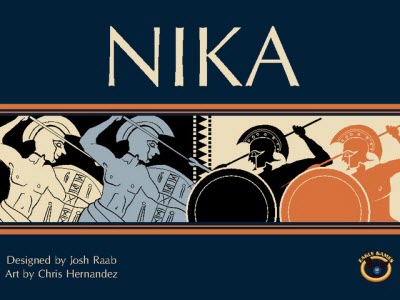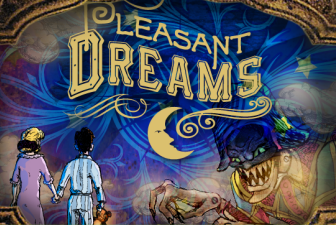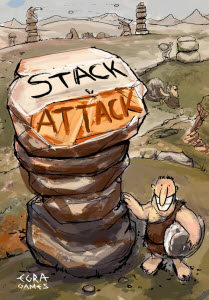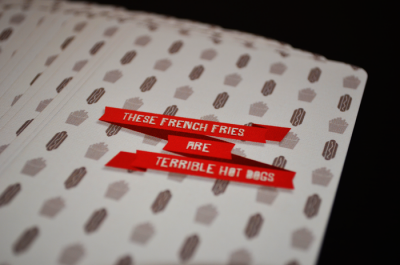In an age of digital delivery just a click away, today is more integrated and interconnected than ever. Some outside of the hobby occasionally get perplexed about how this simple reality – our new reality – can paradoxically have helped encourage a resurgence in board games. After all, if everything is at your fingertips, why would you want to unplug? Why would people willing choose to play games where you have to move the pieces yourself, do the math yourself, and act out your character yourself?
Those outside of the hobby may be confused as to why, but we understand. Gaming is, was, and always will be about socialization. It’s far more rewarding to do that socializing in a medium that rewards it. Video games are fun and all, but the more advanced and sophisticated they get, the more they seem to lose that personal connection. Eventually, you want to see another face, hear a voice that isn’t through a headset, and interact with other humans in the same vicinity as yourself.
It’s alright. We’re sort of hard-wired that way. It’s also why so many new people are stepping back from the impending singularity and having some old-fashioned human interaction. To those new to the hobby, don’t worry: we may not have Farmville, but we have plenty of other games about farming and harvesting crops.
Lots of games about farming and harvesting crops…
Seriously, we probably should stop making games about farming and harvesting crops.
Conventions factor in to this resurgence too, because they prove to be a fantastic opportunity for both game designers and game practitioners to meet up with one another, providing us with a number of useful services. They encourage players from different groups to interact with one another, let designers get in some much-needed development of their prototypes, and they allow for a community to gather over a collective interest.
More important than any of those, however, is that conventions help give games attention. Whether it’s by potential customers, influential print reviewers, YouTube personalities, or news aggregators, getting your game noticed by the larger community is vital. Because as much as we love our meeples and dice and player guides, let’s face it: the gaming industry is not exactly known for smooth and seamless marketing.
The causes of that vary, but the gist is that it leaves little to no room for promotional marketing, let alone the razor-thin profit margins. Instead, in an almost antiquated way, games rely mostly on word of mouth and social media in order to find an audience. Conventions give both speaker and listener a chance to experience what their game is about.
And, naturally, indie conventions give indie games a chance to get their word out where they might otherwise be drowned out in a sea of larger companies and ready-to-sell product.
At the 2013 Boston Festival of Indie Games in September, there were around 30 tabletop games on display for attendees to check out. We recently spoke about the three “Figgie” award winners. Here, we look at four games that benefited from showing their game to folks like you:
NIKA
 What do you get if you combine four-player Chess with ancient battle formations? You get Nika, an abstract tactical game. In it, a player (or teams of players) aspire to move one of their pieces into enemy territory. As with most abstract games, though, the devil is in the details. In Nika, units move similar to ancient Greek units, and players must carefully navigate their way around or risk finding the end of a spear.
What do you get if you combine four-player Chess with ancient battle formations? You get Nika, an abstract tactical game. In it, a player (or teams of players) aspire to move one of their pieces into enemy territory. As with most abstract games, though, the devil is in the details. In Nika, units move similar to ancient Greek units, and players must carefully navigate their way around or risk finding the end of a spear.
Nika was on full display at BostonFIG, garnering a lot of notice with its deep strategy and simple theme. Nika was subsequently picked up by Eagle & Gryphon Games, and they launched a successful Kickstarer in February 2014 with intended release this summer. It also went on to win the Ion Award for strategy at fellow indie convention SaltCon in February – right near the end of their Kickstarter campaign.
Pleasant Dreams
 Part press-your-luck, part psychological test of knowing your opponent, Pleasant Dreams is a quick and simple card game for 1-2 players. One of two games on display by game designer (and BostonFIG director) Aerjen Tamminga, both saw their fair share of interested parties.
Part press-your-luck, part psychological test of knowing your opponent, Pleasant Dreams is a quick and simple card game for 1-2 players. One of two games on display by game designer (and BostonFIG director) Aerjen Tamminga, both saw their fair share of interested parties.
This light tarot-sized game centers around dreaming and how far you can take that dream at the risk of encountering nightmares. Pleasant Dreams ran a very successful Kickstarter for it’s modest game components in April 2014, and we previewed it here. It is currently in production.
Stack & Attack
 In a genre that’s as packed as deckbuilders can be, Stack & Attack edged out some space. This simple deckbuilder is about as primitive as you can get, with players representing cavemen trying to build the tallest rock cairns they can in order to appease their newfound gods. Of course, neighboring tribes are doing the same thing, and you can’t let them succeed. So you must knock their towers over.
In a genre that’s as packed as deckbuilders can be, Stack & Attack edged out some space. This simple deckbuilder is about as primitive as you can get, with players representing cavemen trying to build the tallest rock cairns they can in order to appease their newfound gods. Of course, neighboring tribes are doing the same thing, and you can’t let them succeed. So you must knock their towers over.
It’s family-friendly game with a simple premise, and we were one of many who had a chance to preview it. They had a timely Kickstarter launch, as it went live just three days before BostonFIG and ran until early October 2013. It was one of the only games on display with an active Kickstarter, and it got a much needed boost from the extra attention as it had a, shall we say…rocky start.
These French Fries Are Terrible Hot Dogs
 These French Fries Are Terrible Hot Dogs (or TFFAR…T…you know what, there isn’t a way to shorten it) is a game about selling a lie. This party-style game has players trying to convince a player that the card they hold is better than the others. In typical fashion, the game quickly devolves into silliness, but it certainly caught people’s attention at BostonFIG.
These French Fries Are Terrible Hot Dogs (or TFFAR…T…you know what, there isn’t a way to shorten it) is a game about selling a lie. This party-style game has players trying to convince a player that the card they hold is better than the others. In typical fashion, the game quickly devolves into silliness, but it certainly caught people’s attention at BostonFIG.
French Fries went on to have a fantastic Kickstarter campaign considering it ran right during the December 2013-January 2013 holiday season, and it still pulled in almost five times its goal amount. It also found itself among the few tabletop games showcased at the PAX East Indie Megabooth for indie games in March. Although the game isn’t out yet – it’s slated for July – it’s helped the game get even more attention. And that’s no lie.
These are just a few of the games who received some help as the result of a convention. If you’re a designer and have the means, there is no better way to get your game noticed than to bring it to an indie game convention. Boston FIG is pretty nice, but if you can’t, chances are there is still one within your region you could trek on two.
Remember: never refuse free attention for your game. The more you can get, the better.
